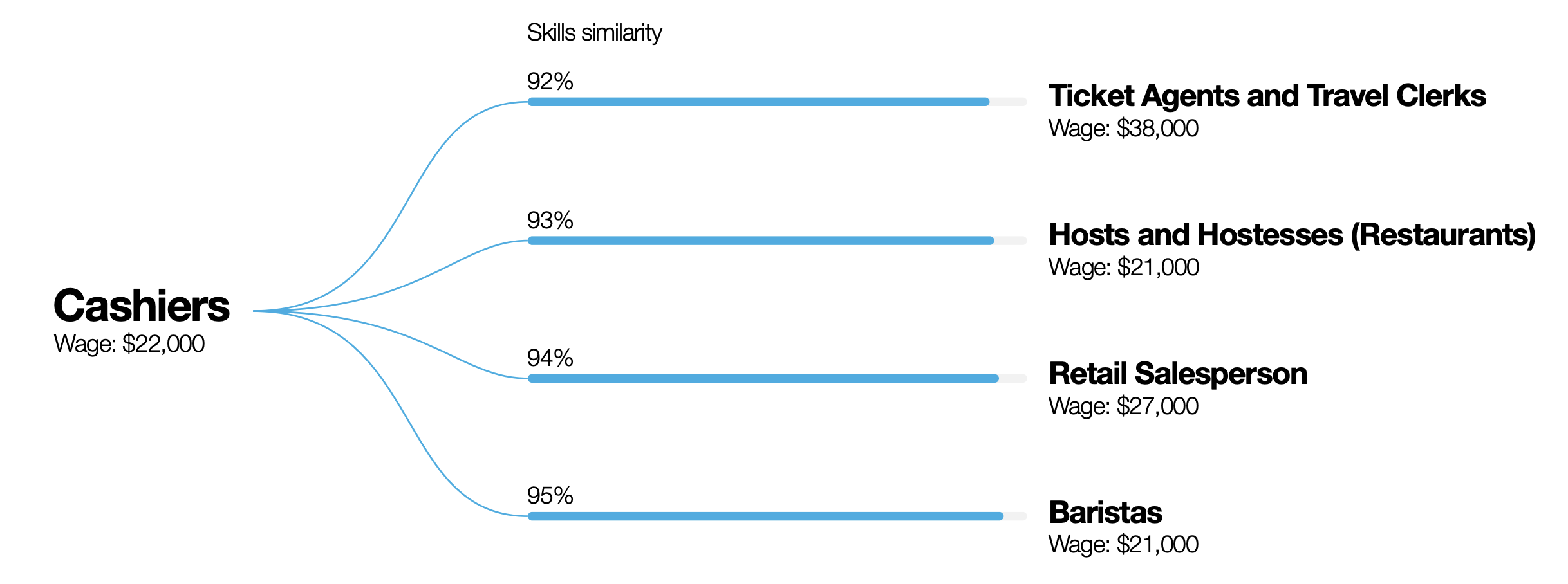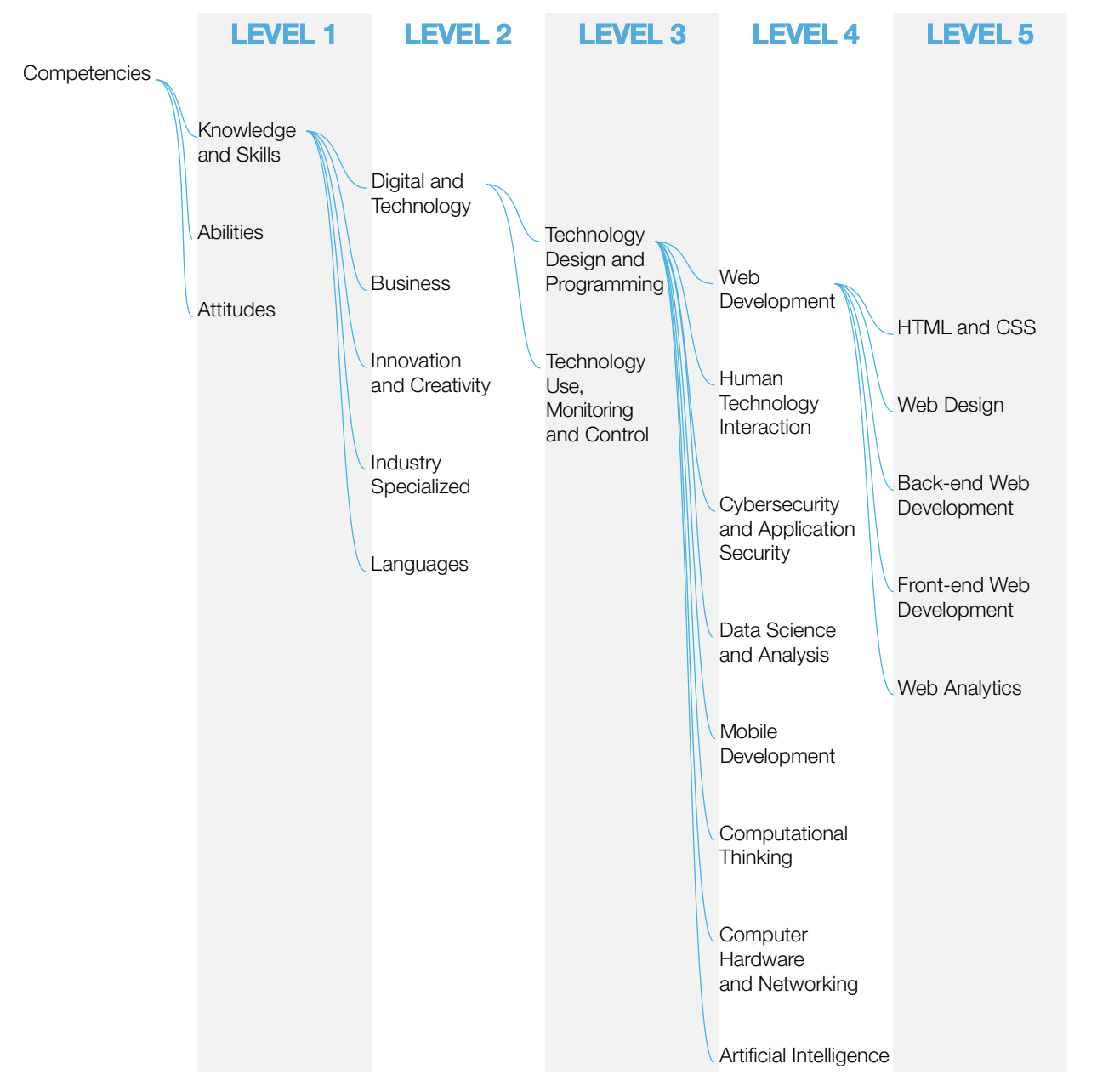The WEF on Building a Common Language for Skills at Work
Steven Forth is co-founder and managing partner at Ibbaka. See his skill profile here.
The World Economic Forum (WEF) published a proposal for Building a Common Language for Skills at Work in January 2021. This proposal reflects the demands that are being felt around the world for a more flexible, extensive, adaptive approach to workforce development.
The workforce of the future will be required to rapidly learn and relearn new skills as reskilling, upskilling and redeployment define the ‘new normal’ in the future of work.
Current approaches, where skill lists are attached to rigid human resources information systems (HRIS), talent management systems and learning management systems (LMS) do not have the functionality or flexibility needed to move us forward.
None of these systems are built around skills. Instead, skill lists have been appended to them in an attempt to paper over the gap. There is an old joke about enterprise resource managements systems (ERPs). “Implementing an ERP is like taking your current processes and pouring concrete over them.” The same can be said for how skills are implemented in these systems.
Current systems of learning and signalling job-fit do not provide the agility that lifelong learners will require, and we find ourselves at a defining moment to make skills the currency of the labour market.
One of the goals of skill based systems is to support what Dennis Green calls career mobility. The WEF document gives a nice simple example.
From WEF Building a Common Language for Skills at Work A Global Taxonomy January 2021
Two other goals for the WEF work are worth calling out.
Find the right talent - in fact, this works in both directions, organizations are better able to find the talent they need, today and in the future, and individuals are able to understand the skills they will need for job and career mobility.
Building fairer and more diverse labor markets - Aligning on a common language for skills will enable employers to better understand workforce needs and hire based on skills acquisition, rather than on social factors such as networks and access to recognized institutions. Further, taking a skills-based approach can help reduce bias in hiring practices and enable new pathways to employment by allowing nontraditional candidates to be considered for employment.
The WEF model is built around four aspects.
Definitions A set of definitions and differentiations of commonly used terms
Categorizations A categorization of skills clusters and groupings at various levels of granularity
Recommendations Mechanisms for adoption in assessment, hiring, learning and redeployment practices
Use Cases Examples of how the taxonomy has already been leveraged to lead the Reskilling Revolution
The definitions part of the WEF skill model is interesting and maps well to the work being done at the IEEE 1484.20.2 Defining Competencies standard currently in development.
For the WEF,
A competency is a collection of skills, knowledge, attitudes and abilities that enable an individual to perform job roles.
The current IEEE definition is
A competency is the set of skills and behaviors required in the performance of a task or activity within a specific context.
The WEF unpacks this as follows.
Skills and Knowledge
Skills are the capabilities needed to complete a task, and therefore a job. Knowledge is the body of facts, principles and theories that are related to a field of work or study, and that can be further split into dependent knowledge (practical and procedural) and context-independent or theoretical knowledge.
Attitudes
Learned behaviours, emotional intelligence traits and beliefs that individuals exhibit that influence their approach to ideas, persons and situations.
Abilities
Possession of the physical, psychomotor, cognitive and sensory means to perform a job.
The IEEE puts its definition of competencies in context.
There will be a bit of work needed to reconcile these approaches but they seem to be generally compatible. There may also be a need to map these to the Open Skill Networks Reusable Skill Definitions (RSDs).
As a platform for skill and competency management, Ibbaka will of course need to be able to implement and crosswalk all of these different approaches (‘crosswalk’ is technical jargon for mapping from one model to another).
The WEF is also proposing an interesting classification system for skills.
The Ibbaka Talent platform is able to support multiple skill categorization systems and we are investigating adding this as an option. This approach is much more complex than Ibbaka’s flat category system and may prove to be difficult to keep updated as new skills flow into the system.
The Ibbaka Skill Categories …
Foundational: Skills used to develop other skills
Social: Skills used to work with other people
Technical: STEM (Science Technology Engineering Math) skills (note that most math skills are categorized as foundational)
Design: Skills used to design new solutions and skills associated with creativity
Business: Skills used to conduct business and manage organizations
Tool: Specific tools such as hammers. saws, drill presses, programming languages, process frameworks, application platforms
Domain: Ways to classify knowledge (this could clearly be massively expanded)
Language: Human languages, such as Korean, English, Klingon …
Other: Skills not yet categorized
Looking through any categorization system one often sees skills that could belong in more than one category. Having been involved in the design of a number of categorization systems for skills, I doubt that any hierarchy is the best approach. At the very least, skill classification should be using faceted systems, and in the dynamic world we live in tagging systems are likely to prove more adaptive than categorization systems.
The WEF document goes on to suggest an approach to committing to, embedding and mainstreaming skills in an organization. Integration with learning and development is also discussed and the work is connected to other WEF work on future skills. There are some good best practices suggested here that we will discuss in another post.
There is a lot of activity in the skills and competency world these days. This reflects its important to building resilient, adaptive and scalable organizations. Too often though, the focus is on the organization. Let’s keep the individual in view as we develop these approaches and help people to take control of their careers.
There is grandeur in this view of life, with its several powers, having been originally breathed into a few forms or into one; and that, whilst this planet has gone cycling on according to the fixed law of gravity, from so simple a beginning endless forms most beautiful and most wonderful have been, and are being, evolved.
Charles Darwin at the end of The Origin of Species
Ibbaka Posts on Competency Models and Competency Frameworks
From user experience to competency model design - Margherita Bacigalupo and EntreComp
Competency framework designers on competency framework design: The chunkers and the slice and dicers
Competency framework designers on competency framework design: Victoria Pazukha
Design research - How do people approach the design of skill and competency models?
The WEF on Building a Common Language for Skills at Work (this post)
The Skills for Career Mobility - Interview with Dennis Green
Lessons Learned Launching and Scaling Capability Management Programs
Talent Transformation - A Conversation with Eric Shepherd, Martin Belton and Steven Forth
Individual - Team - Organizational use cases for skill and competency management
Co-creation of Competency Models for Customer Success and Pricing Excellence
Competencies for Adaptation to Climate Change – An Interview with Dr. Robin Cox
Architecting the Competencies for Adaptation to Climate Change Open Competency Model
Integrating Skills and Competencies in the Talent Management Ecosystem
Organizational values and competency models – survey results





